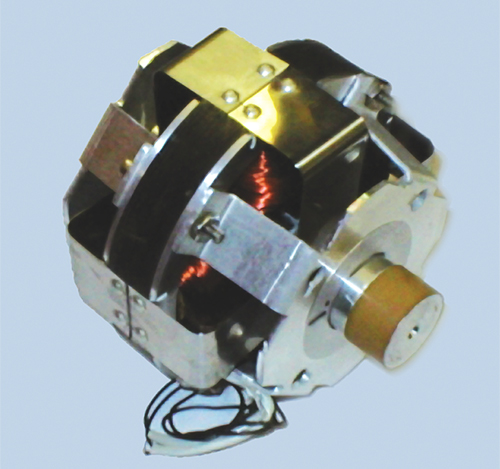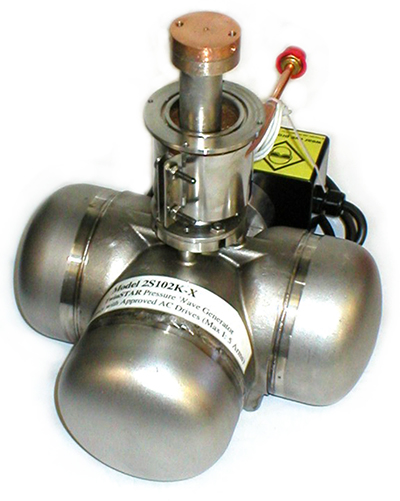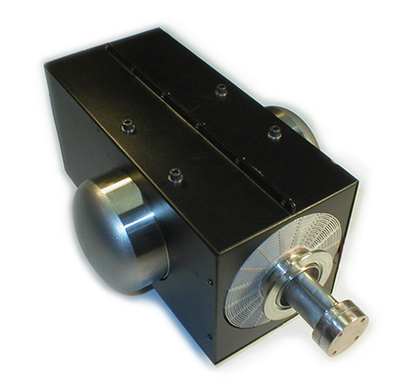Cryogenic Cooling for Myriad Applications—A STAR Is Born!
Originating Technology/NASA Contribution
Cryogenics, the science of generating extremely low temperatures, has wide applicability throughout NASA. The Agency employs cryogenics for rocket propulsion, high-pressure gas supply, breathable air in space, life support equipment, electricity, water, food preservation and packaging, medicine, imaging devices, and electronics. Cryogenic liquid oxygen and liquid hydrogen systems are also replacing solid rocket motor propulsion systems in most of the proposed launch systems—a reversion to old-style liquid propellants.
I n the late 1980s, NASA wanted a compact linear alternator/motor with reduced size and mass, as well as high efficiency, that had unlimited service life for use in a thermally driven power generator for space power applications. Prior development work with free-piston Stirling converters (a Stirling engine integrated with a linear actuator that produces electrical power output) had shown the promise of that technology for high-power space applications. A dual use for terrestrial applications exists for compact Stirling converters for onsite combined heat and power units.
The Stirling cycle is also usable in reverse as a refrigeration cycle suitable for cryogenic cooling, so this Stirling converter work promised double benefits as well as dual uses. The uses for cryogenic coolers within NASA abound; commercial applications are similarly wide-ranging, from cooling liquid oxygen and nitrogen, to cryobiology and bio-storage, cryosurgery, instrument and detector cooling, semiconductor manufacturing, and support service for cooled superconducting power systems.
Partnership
NASA entered into a Small Business Innovation Research (SBIR) contract with Clever Fellows Innovation Consortium, Inc. (CFIC), of Troy, New York, through Glenn Research Center, to develop a lighter, more robust linear alternator based on CFIC’s novel STAR architecture. This resulted in a 15-kilowatt prototype alternator for NASA’s Space Power Research Engine (SPRE) that reduced overall Stirling converter mass by 21 percent. The work accomplished through this partnership was later extended to a line of linear alternators and motors, used mainly in cryogenic refrigerators that are marketed by Qdrive, formed in 2001 as the cryogenic cooler development and manufacturing arm of CFIC.
Qdrive’s mission is to fill the need for quiet, low-vibration, no-maintenance, long-life, complete cryogenic cooling systems that are easy to use and economically attractive. Its work with NASA has aided in its ability to meet this goal. Qdrive’s acoustic Stirling cryocooler line is now the industry’s widest capacity range of unitary coolers, with 77 kelvin capacities from 10 watts to over a kilowatt.
Product Outcome
One of the advances the SBIR contract spawned was the establishment of the manufacturing capabilities of Qdrive, which resulted in the direct sales of the company’s STAR-based equipment. STAR motor/alternators are now the driving force behind all Qdrive products. STARs are linear reciprocating devices that combine the unique commuter flexing axial suspension, with plunger-mounted, high-energy magnets and a robust coil-over-iron stator (the stationary portion of a motor). These motors can be considered a hybrid of motor and loudspeaker. Like loudspeakers, they move in and out in response to an electrical input, but like motors, they operate at a preferred speed (frequency), and are powerful and efficient. Qdrive’s current STAR line has powers from 100 to over 10,000 watts-per-unit, with efficiencies ranging from mid-80s to well over 90 percent (the best loudspeakers are under 50 percent).
STAR motors have a unique wear-free suspension system—with unlimited life and extremely pure linear motion without rubbing, rolling, sliding, or any other wearing contact—a feature that eliminates lubrication requirements. They utilize an innovative interlocking, moving magnet design with low-cost block magnets, also enabled by the single-degree of freedom suspension.
The noncontact STAR motors are combined with acoustic Stirling coldheads in Qdrive coolers, so there are no moving parts operating at the cold temperatures. This design eliminates oils and other condensibles that would otherwise foul the cold parts of conventional mechanical coolers. A compact, balanced configuration of twin STAR motors in the machines produces minimal vibration.
Qdrive’s technological strength is sustained by key alliances. For manufacturing and distribution of, and continued improvements to, its larger systems, the company has allied with Praxair, Inc., of Danbury, Connecticut—the largest air separation and industrial gas company in the Americas, with offices worldwide. Praxair also designs, engineers, and constructs cryogenic supply systems using Qdrive’s STAR motors.
Qdrive has also licensed Helix Technology Corporation, of Mansfield, Massachusetts (recently acquired by Brooks Automation, Inc., of Chelmsford, Massachusetts), to make and sell its coolers for the demanding fields of semiconductor and flat panel display manufacturing. The CTI-Cryogenics division of Helix Technology is the global leader in cryogenic high-vacuum products, where reliability and low-vibration are paramount.
Other development customers include the Los Alamos National Laboratory and the Applied Research Laboratory at Penn State University—both global leaders in thermoacoustics—as well as other superconducting products companies, major international refrigeration manufacturers, NASA, the U.S. Department of Energy, the U.S. Department of Defense, and laboratory and university researchers globally.
Future applications will include cooling in more familiar situations. CFIC-Qdrive has just completed the world’s first compact and efficient thermoacoustic food refrigerator (STAR driven) for mobile use by the U.S. Army. The modifications required for efficient operation at noncryogenic conditions are applicable to many other refrigeration tasks and even to air-conditioning without environmental risks, suggesting that this SBIR spinoff may become one of the coolest innovations yet!

Qdrive’s 1S102M/A linear reciprocating motor/alternator. All of the company’s products benefit from the STAR motor/alternators advanced under the NASA contract.

Qdrive’s water-cooled 2S102K L-form configuration desktop cryocooler.

Qdrive’s shrouded, air-cooled 2S102K desktop cryocooler.













